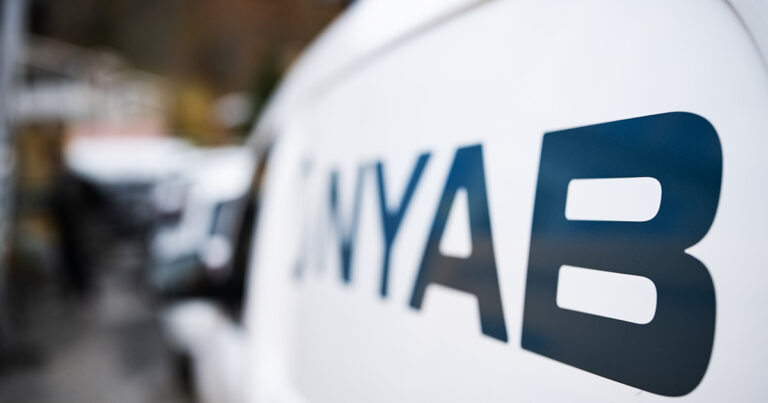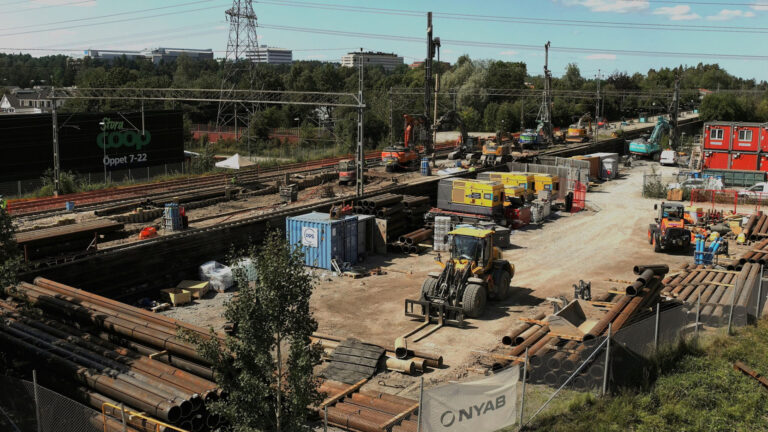The bridge over Siikajoki, built by Skarta, was opened to traffic
11.10.21Skarta’s activities are based on a strong expertise in specialized construction, which have traditionally been utilized in, for example, building bridges. When Jylhänranta bridge on highway 4 had come to its end, Skarta built a new bridge that meets the modern-day needs, as well as the temporary bridge that was used during the construction. Siikajoki river can be crossed along the new bridge as of 8 October.
The Centre for Economic Development, Transport and the Environment for Lapland put the construction project of the Jylhänranta bridge out to tender in summer 2020, and Skarta won the race. The costs of the project are approximately 2.1 million euros. The Jylhänranta bridge is located on the highway 4 around 90 kilometers north of Oulu and it crosses the Siikajoki river. The Finnish national road 4 is the main connection between the southern and the northern Finland. Siikalatva is located in the middle, so traffic on the bridge is heavy.
The old bridge had been built in 1966 and it was in a bad condition, therefore not corresponding to the needs regarding a main road. A more load-bearing and a wider bridge was needed so that the bridge wouldn’t be a bottleneck on a busy highway.
”When designing and constructing the new bridge, the middle railing that will be built later has been prepared for, and the width of the bridge provides for a seven-meter-wide special transportation to drive in both lanes even after the middle railing has been built”, says Antti Nissinen, Site Manager at Skarta.
Smooth traffic is essential even during the construction project
Organizing and scheduling are at the center of the competence in a bridge construction site. Given the critical location of this bridge on a highway it was especially important that the traffic was kept smooth with as few interruptions as possible during the whole construction project.
Skarta has a long experience from organizing and scheduling, and this project also proceeded smoothly. As the location is around a river with an abundance of water, as well as a municipality with plenty of snow, the possibility of floods in the spring needed to be taken into account in the schedule.
”We started the project a year ago in September with the building of detour and the temporary bridge, so that the old bridge was able to be demolished and we were able to start building the actual new bridge. The detour and the temporary bridge with their traffic arrangements succeeded well, it is very normal task for us. Similarly, the launching of the new bridge on 8 October went according to plans”, Nissinen describes the progress of the project.
The hottest summer for a hundred years needed to be considered
The new bridge is a 68-meter-long prestressed cantilever bridge made of reinforced concrete. The construction was started last February. When the piling work, scaffolding and the wooden mold were completed and the reinforcement was made inside, the concreting was started in July. The extraordinarily hot summer guided the concreting work.
“The concreting work cannot be done if its too hot, as the massive concrete structures develop heat themselves at the consolidation stages, and the temperature of the structure must not increase too much during the construction and the drying process to reach prime quality. Therefore, during the hottest weather we had to wait with the concreting work about a week until the outside temperature decreased to 20 degrees”, Niskanen says.
In September, the molds had been removed and it was time for the insulation to start. “Membrane insulations on top of the concrete are like a roofing felt on a house. They protect the structures of the bridge from getting wet. After the membrane work we made the protective concrete and the asphalt deposits on top of it, and now in October we got to open the bridge to traffic. The project is completed within the schedule, although the heat wave of the century tried to slow us down.”


